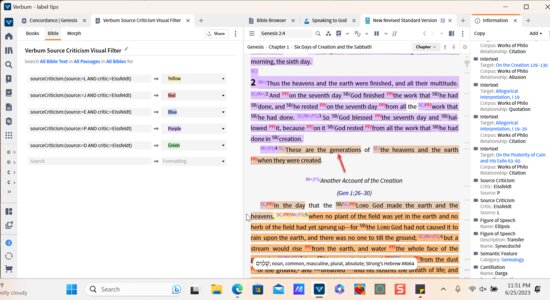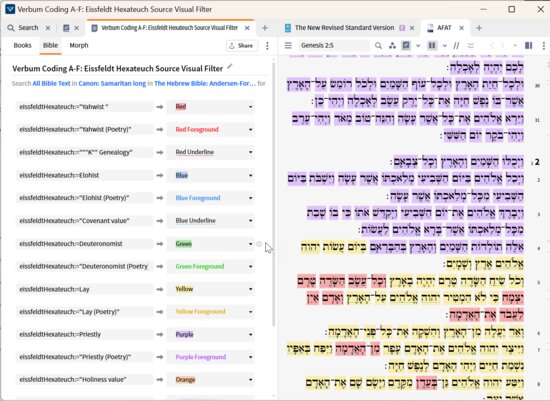Verbum coding

Andersen-Forbes coding

The red arrow on the first image (Logos/Verbum dataset) has segments coded with two tags (see Information column) which results in mixed color highlighting. The second image is the Andersen-Forbes coding which has no mixed tagging. I realize that the Andersen-Forbes coding is much older in computer time but I don't know (and probably wouldn't know) of any major changes that would explain the difference in coding. Why do they differ -- different philosophy of showing ambiguities? advances in theories? side effect of Hebrew vs. English tagging? error in tagging?